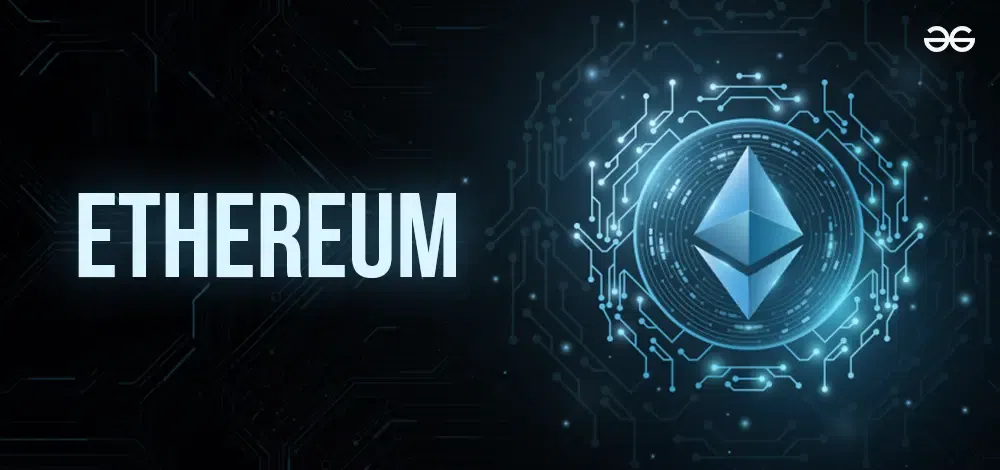Ethereum is one of the most popular cryptocurrencies today, second only to Bitcoin. But while Bitcoin is mainly used as a digital currency, Ethereum offers much more. It’s a decentralized platform that allows developers to build and run applications without relying on traditional middlemen like banks.
What is Ethereum?
Launched in 2015, Ethereum is an open-source blockchain system. A blockchain is a digital ledger that records transactions in a secure and transparent way. Unlike Bitcoin, mainly used for sending and receiving money, Ethereum’s blockchain supports smart contracts. These are self-executing contracts with the terms of the agreement which are directly written into lines of code.
How It Works:
At its core, Ethereum operates on a blockchain, a secure, transparent digital ledger that records transactions. What makes it different is its ability to support smart contracts, self-executing agreements. It is where the terms of the contract are written directly into code. These contracts automatically execute actions once certain conditions are met. without needing a third party to verify or enforce them.
Ethereum also uses a cryptocurrency called Ether (ETH). It powers transactions and computational tasks within the network. Miners validate transactions by solving complex mathematical problems, which thus secures the network and ensures that every transaction is genuine.
Example:
Imagine you want to buy a digital artwork (an NFT) from an artist. Instead of paying through a traditional method like a bank transfer, you can use Ether on the Ethereum network. The transaction is processed via a smart contract that ensures the artist gets paid only when the artwork is transferred to you. This happens automatically, and neither you nor the artist needs to trust each other or a third party, as the contract enforces the agreement.
Advantages:
- Decentralization: No single authority controls the network, thus reducing the risk of fraud.
- Security: The blockchain’s transparency and cryptographic protection make it difficult to alter past transactions.
- Smart Contracts: These enable self-executing agreements, saving time and money.
- Flexibility: Developers can create a wide range of applications on the Ethereum platform, making it adaptable to many industries.
Disadvantages:
- Scalability Issues: As the number of users grows, Ethereum’s network can become congested, causing slower transaction speeds and higher fees.
- High Transaction Costs: During times of high demand, the fees (known as gas fees) can increase significantly, making small transactions expensive.
- Complexity for Beginners: Setting up and using Ethereum can be difficult for people unfamiliar with cryptocurrency or blockchain technology.
- Environmental Impact: Ethereum uses proof-of-work mechanism. It is used for validating transactions, requires a lot of computational power, leading to concerns over its environmental footprint.
Conclusion:
Ethereum is more than just a digital currency. It’s a versatile blockchain platform that supports smart contracts and decentralized applications, enabling faster, secure, and also automated transactions. But, issues like scalability and high fees remain challenges that need to be addressed. As more people and industries adopt Ethereum, it’s set to become a key player in the future of blockchain technology.
– Ketaki Dandekar (Team Arthology)
Read more about Ethereum here – https://www.investopedia.com/eth.asp
